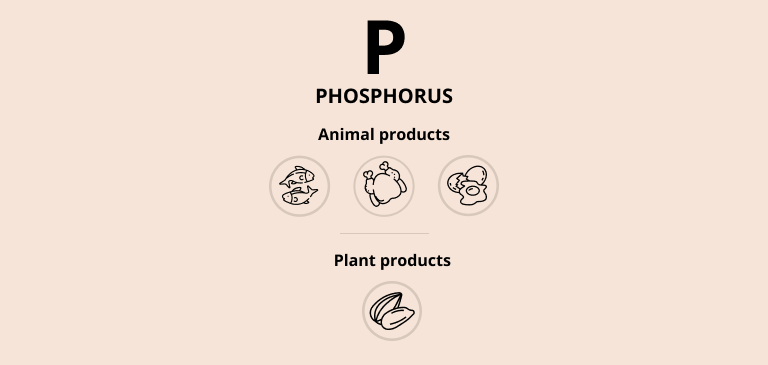Phosphorus
Year of discovery: 1669 | Hennig Brand
About 85% of phosphorus in the body is bound to calcium in bones and teeth. In all cells of the body, phosphorus is part of the main buffer system (as phosphoric acid and its salts). Phosphorus is also part of DNA and RNA, essential components of all cells. Phosphorus supports energy metabolism in the form of adenosine triphosphate (ATP). The ATP molecule uses three phosphate groups during its function. Many enzymes and B vitamins are activated only after the phosphate group is attached. Lipids found in cell walls also use phosphorus. These phospholipids give cells a fluid structure that is essential for transporting compounds into and out of cells.
Major sources of phosphorus
Phosphorus occurs naturally in many foods. Foods of animal origin, such as meat, fish, poultry, eggs and milk, are excellent sources of phosphorus, as are sunflower seeds.
Bioavailability of phosphorus
Phosphorus is well absorbed from most foods, especially foods of animal origin. Only 50% of phosphorus is available to the human body in phytic acid/phytate-containing plant seeds. People who consume large amounts of dairy products or cola drinks consume phosphorus in higher amounts, which can interfere with calcium metabolism.
Risks of insufficient phosphorus intake
Phosphorus is very commonly found in food. Therefore, dietary phosphorus deficiency occurs mainly in malnutrition, anorexics or alcoholics. Symptoms of phosphorus deficiency include lack of appetite, restlessness and irritability. In children, phosphorus deficiency can manifest as slowed growth and poor bone and tooth development.



